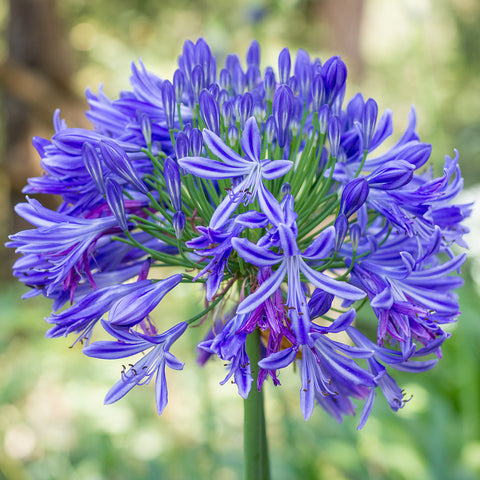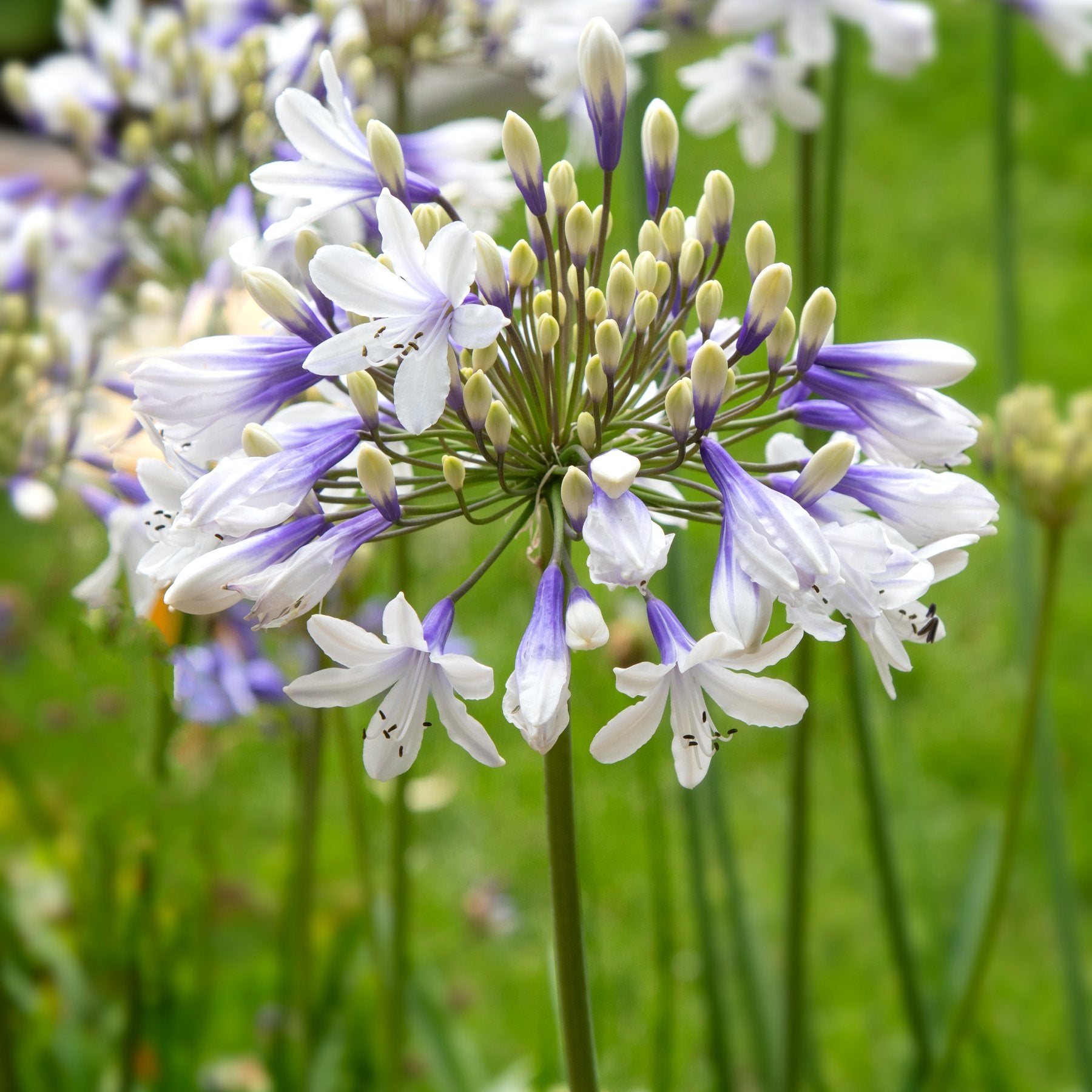Agapanthus Growing Problems: Dirt, Sunlight, and Watering
Agapanthus Growing Problems: Dirt, Sunlight, and Watering
Blog Article
Letting Loose the Secret to Effective Agapanthus Growing: Tips and Tricks for a Flourishing Garden
In the world of horticulture, growing agapanthus successfully calls for a calculated technique that incorporates numerous elements of plant treatment. With cautious interest to detail, one can open the tricks to supporting these stunning blossoms, bring about a yard that thrives with beauty and vibrancy. By recognizing the subtleties of agapanthus cultivation, one can create an environment where these plants prosper and flower perfectly. In the complying with conversation, we will certainly check out crucial suggestions and methods that will certainly direct you in the direction of a flourishing agapanthus garden, supplying insights into finest practices, dirt problems, watering methods, and a lot more.
Planting Agapanthus: Finest Practices
When growing Agapanthus, correct dirt preparation is important for making sure effective development and growth of these gorgeous flowers. Agapanthus, generally called Lily of the Nile or African lily, flourishes in well-draining dirt with a somewhat acidic to neutral pH degree - Agapanthus. Prior to growing, it is crucial to change hefty clay dirts with natural issue such as garden compost or peat moss to boost water drainage and give essential nutrients for the plants
To plant Agapanthus, choose a location that receives full sunlight to partial color, as this will certainly advertise healthy and balanced growth and abundant flowering. Dig an opening two times the size of the plant's origin sphere and put the Agapanthus at the exact same depth it was previously growing. Gently backfill the opening with dirt, pushing down strongly to get rid of any air pockets around the roots.
Water the newly grown Agapanthus completely and remain to keep the soil equally wet, specifically throughout the plant's active growing season. Agapanthus. Using a well balanced fertilizer once a month can even more support the plant's growth and blooming. By complying with these finest practices for growing Agapanthus, you can develop a magnificent screen of these fascinating flowers in your yard
Suitable Soil Issues for Agapanthus
For optimal development and blooming success of Agapanthus plants, making sure the soil problems are ideal is critical. Agapanthus likes soil that is abundant in nutrients, so including a well balanced fertilizer throughout the growing period can promote healthy development and dynamic blossoms.

Watering and Feeding Tips
To make certain healthy and balanced development and dynamic blossoms, appropriate watering and fertilizing methods are vital for successful Agapanthus farming. Agapanthus plants benefit from normal watering, particularly during the growing period.
When it concerns fertilizing Agapanthus, a balanced plant food with equivalent components nitrogen, phosphorus, and potassium can be used in the springtime to promote healthy and balanced development my review here and flowering. Slow-release plant foods are suitable for supplying nutrients gradually over an extensive duration. Stay clear of over-fertilizing, as this can lead to too much vegetation development at the expenditure of blooms.
Furthermore, integrating natural issue like garden compost into the dirt can improve nutrient degrees and improve soil structure, helping in the general health and wellness of the Agapanthus plants. By adhering to these watering and feeding ideas, gardeners can guarantee their Agapanthus plants flourish and generate stunning screens of flowers.
Pruning and Deadheading Methods
Proper pruning and deadheading methods play a vital role in keeping the wellness and appearances of Agapanthus plants, enhancing the vital techniques of watering and fertilizing for successful growing. Pruning Agapanthus entails eliminating invested blossom heads, yellowing or dead fallen leaves, and total shaping of the plant to promote far better growth. Deadheading, the process of removing discolored blossoms, not only boosts the plant's appearance however also motivates further growing.
When deadheading Agapanthus, it is suggested to snip off the blossom stem at the base making use of sharp, tidy shears. This procedure redirects the plant's power from seed production back right into root and vegetation development, promoting a much healthier and more robust plant. Routine deadheading can expand the blooming period of Agapanthus and protect against self-seeding, which can result in congestion.
In regards to trimming, Agapanthus generally gain from a light trim after blossoming to tidy up the plant and encourage fresh development. Cutting down the invested blossom stems and getting rid of any damaged or dead vegetation helps keep the plant's vigor and total look. However, it is essential to prevent reducing right into the crown of the plant, as this can deteriorate its health.

Protecting Agapanthus From Vermins and Diseases
Implementing reliable parasite and disease administration techniques is critical to securing the health and wellness and vigor of Agapanthus plants in cultivation. Agapanthus are normally hardy plants, however they can still come down with different parasites and conditions try this otherwise appropriately taken care of. One typical insect that influences Agapanthus is the Agapanthus borer, a caterpillar that passages into the plant, creating damage to the fallen leaves and flowers. To stop invasions, routine examination of the plants is essential. If borers are found, they can be manually removed, or insecticidal soap can be made use of as a control procedure.
In enhancement to insects, Agapanthus are prone to illness such as root rot and fungal fallen leave areas. These concerns can often be stopped by making sure correct drainage and avoiding overwatering. Affected parts of the plant ought to be quickly gotten rid of look at these guys to protect against additional spread if signs of condition show up. Fungicides may likewise be made use of as a therapy procedure, following the producer's directions thoroughly. By staying watchful and resolving pest and illness issues quickly, gardeners can assist their Agapanthus flourish and grow.

Final Thought
To conclude, successful cultivation of agapanthus needs appropriate planting strategies, optimal soil conditions, appropriate watering and fertilizing, routine trimming and deadheading, and protection from parasites and illness. By adhering to these techniques and suggestions, gardeners can make certain a prospering garden full of gorgeous agapanthus blossoms. Agapanthus. Keep in mind to keep consistent care and attention to detail to promote the health and wellness and long life of these stunning plants
When planting Agapanthus, appropriate dirt preparation is essential for ensuring successful development and advancement of these lovely blossoms.Water the freshly grown Agapanthus completely and continue to maintain the soil evenly damp, specifically throughout the plant's active growing period.For ideal development and growing success of Agapanthus plants, guaranteeing the soil problems are perfect is crucial. When growing or hair transplanting Agapanthus, make certain the dirt is well-prepared to offer the essential structure for the plants to establish themselves efficiently. One usual pest that impacts Agapanthus is the Agapanthus borer, a caterpillar that passages right into the plant, causing damages to the blossoms and fallen leaves.
Report this page